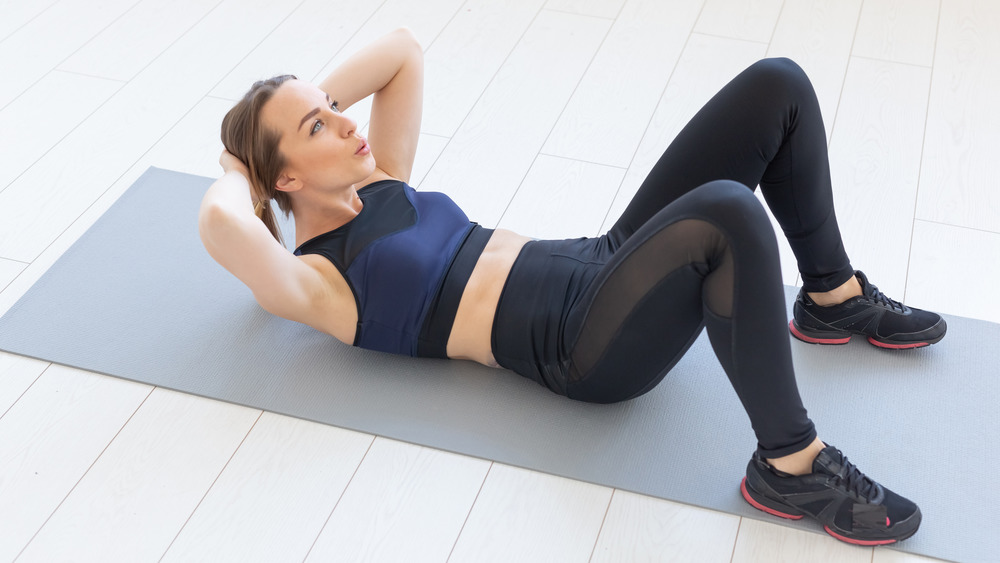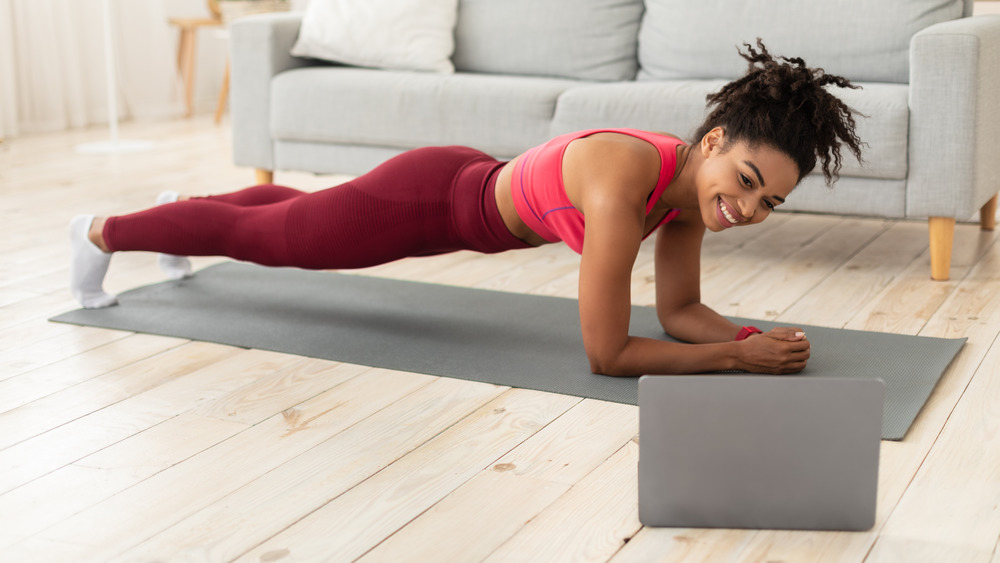Planks Vs Crunches: Which One Is Better For Your Abs?
It's a core competition. Which exercise is better for your abs — planks or crunches? Crunches work one muscle, while planks work several, and crunches have a higher injury risk than planks. But which one you choose might depend on if you have problems with your wrists, shoulders, or back.
Crunches work the rectus abdominis, the muscle that will give you a six-pack. The plank works the rectus abdominis, as well as the deltoids (shoulder muscles), hip flexors, glutes, quads, and the erector spinae — a group of muscles in your back that run from your neck to your pelvis. If you're looking to work more muscles and get more out of one exercise, the plank is the clear winner (via Les Mills).
Planks are a static exercise, while crunches require movement, and crunches have a higher injury risk. During crunches, your spine is forced to curve against the floor or mat, putting pressure on your spine and the discs in between your vertebrae. This can cause lower back pain or worse, a slipped or herniated disc. If you go past how many crunches you can do in proper form, you might tilt your head forward, putting pressure on your neck, causing neck pain. That pain could be from a strained back or neck muscle, requiring some healing time (via Livestrong and Harvard Health Publishing).
Proper plank form and proper crunch form
The clear winner here is the plank since there is less risk of injury and it works way more muscles. It's a whole-body exercise, not just one for your six-pack. But if you have wrist or shoulder problems, you might choose the crunch. If you have back problems, go with the plank.
A forearm plank is the standard where your forearms, elbows, and toes are the only things touching the mat. Keep your feet about hip-width apart and your forearms on the mat with your elbows just below your shoulders. Your hands should be about shoulder-width apart, in line with your elbows. Your whole body should be in a straight line from head to toe — no dipping or arching. Focus on the spot between your hands to keep your head in a neutral position. Engage your core to keep that form and work those muscles (via Self).
Lie on your back with your knees bent and feet on the mat about hip-width apart. Place your arms across your chest with your hands touching opposite shoulders. Engage your abs and inhale before you start the crunch. Exhale while you slowly lift your shoulders and upper back off the mat. Inhale on the way back down, making sure your head and neck are neutral the whole time (via Self).


